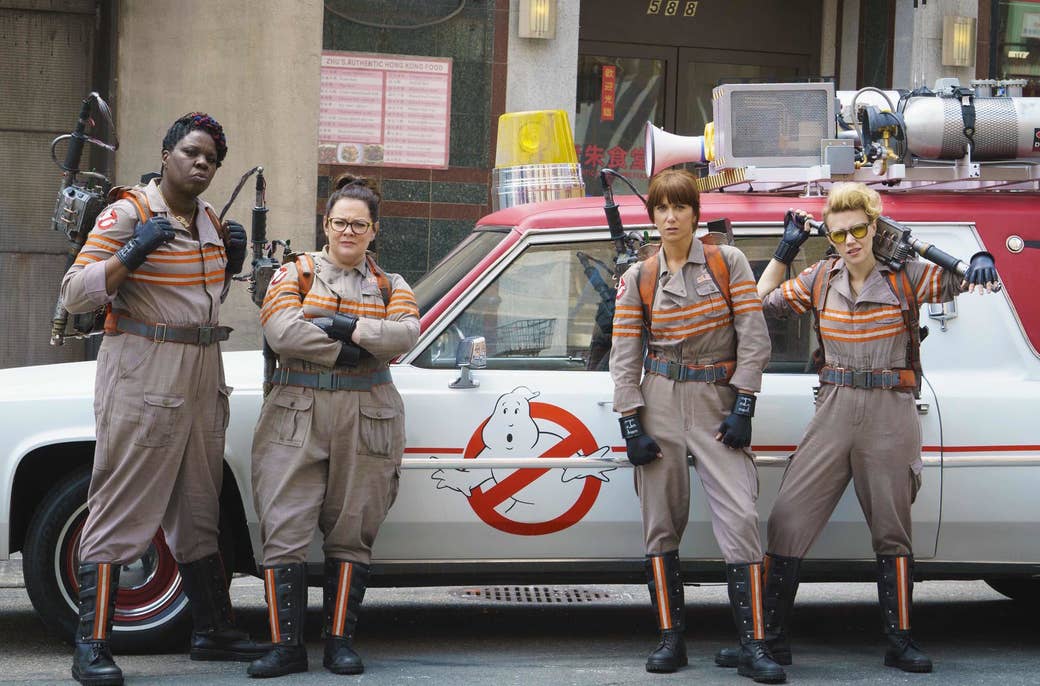
Paul Feig's all-female Ghostbusters has — until now — been everything but a movie. It's acted as a Rorschach test for pent-up feelings about the seemingly endless cycle of reboots, and about nostalgia. Would that the criticism stopped there, though: Ghostbusters, more than anything else, has been a symbolic recipient of vile attacks from some of the angriest misogynists on the internet. And while many movie fans, hysterical men's rights activists, and YouTube commenters (who have given Ghostbusters' trailers literally millions of thumbs-down votes) may have had a claim to a reasonable critique about Hollywood's lack of new ideas, a disappointing number of them also lost the high ground when they lobbed insults at the filmmakers and actors, including calling Feig a "faggot" and the women "cunts," "feminazis"...and worse.
Feig (The Heat, Bridesmaids, Spy) and co-writer Katie Dippold (The Heat) have endured the onslaught of outsized negativity for almost two years, since the film was first announced. Initially, it was unexpected, then it became wretched. "We've taken a lot of abuse," Feig said during an interview with BuzzFeed News.
But the film's release means being able to stop fighting with lunatics and finally show the damn thing: Ghostbusters now has a 75% fresh rating on Rotten Tomatoes. Many critics have praised its ensemble cast — Melissa McCarthy, Kristen Wiig, Leslie Jones, and Kate McKinnon — including BuzzFeed News' Alison Willmore: "The interesting part is in how these characters bounce off of one another along the way, these brilliant, awkward, hilarious women who come to find they need affirmation only from one another. It’s a sight that’s worth all the nasty comment sections the internet has to offer."
Whether the film's quality and box office do make this project worth it will be determined in the next few months. Perhaps then enraged anti-Ghostbusters trolls can move on to claiming that their childhoods have been ruined by something else. (Their parents.)
Early in July, Feig and Dippold sat down in Beverly Hills with BuzzFeed News to discuss Ghostbusters' arduous path, which also included viewers’ concerns over Jones’ role becoming a racist stereotype. Also of note: the surprising inspiration for Bill Murray's character, Chris Hemsworth's secret improv skills, and the balancing act with callbacks to the original Ghostbusters. (Warning: There are spoilers for the movie throughout.)
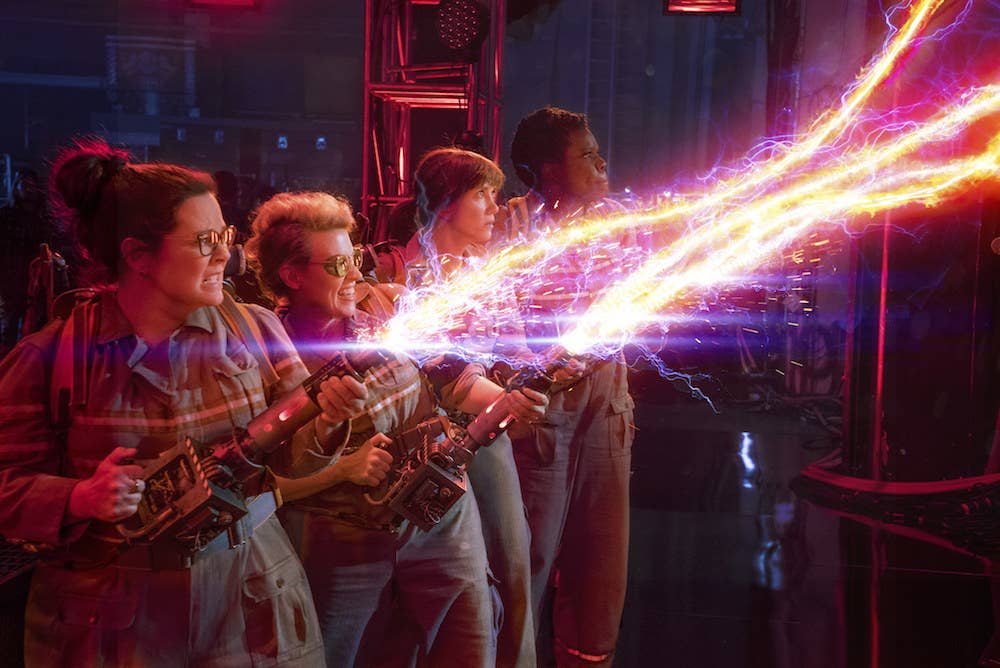
1. When Feig first approached the script in summer 2014, he thought that he might want to clear the Ghostbusters decks entirely and do a full reboot.
"Part of me was like, let's just throw everything out," he said.
But then Dippold said there were be canonical Ghostbusters elements she would be sad not to include — such as the origin story behind the Ecto-1 (the Ghostbusters' car) and the creation of the ghost-sucking proton packs. And, of course, there's the backstory of the Ghostbusters logo, which ends up being crafted at the hands of a sarcastic graffiti artist played by Nate Corddry. (The graphic makes a menacing return in the movie's final act.)
As for the story's emotional core, Feig and Dippold decided it would be the friendship between Abby (McCarthy) and Erin (Wiig), with all four women forming a family by the end. The importance of female friendship isn’t exactly a frequent theme in summer blockbusters, but it happens to also be the crux of Feig and Dippold’s first collaboration, The Heat, in 2013. "That's why I loved The Heat so much — Katie's script — because that was the story about two professional women finding an ally, finding a friend," said Feig. "I know we're really in sync on that."
"I've learned from this man," said Dippold, gesturing toward Feig. "I feel like I used to tend to go for the joke, and I was always so afraid of something feeling too mushy. Left to my own devices, I feel like the movie could be, like, See ya! See ya later! as they're walking away from each other. But he pushed and encouraged me to really embrace that."
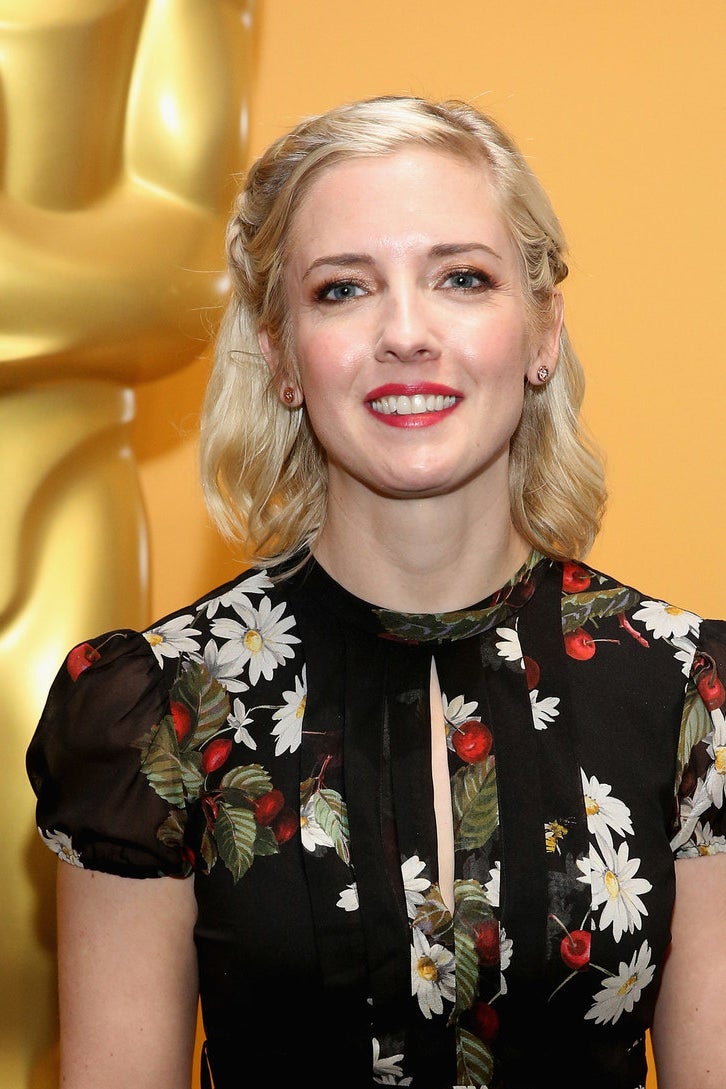
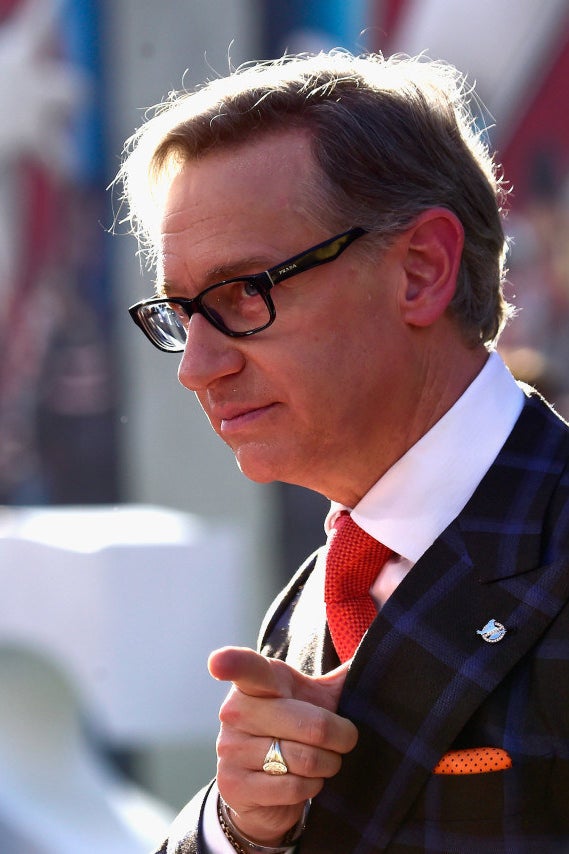
Screenwriter Katie Dippold, left; right, director and writer Paul Feig.
2. The callbacks to the original Ghostbusters — which include a number of cameos — are plentiful. There were no guidelines for how they added them.
How to weave in references to the first movie was "a constant debate," Dippold said. "At the end of the day, it was: What would we be excited about seeing on the screen again?"
Feig remembered being particularly nervous on the day when Sigourney Weaver came to film her cameo. "When you have a major star like Sigourney, it's very nerve-racking. Suddenly, our joke-writing skills get very—" He mimicked hyperventilating. (Weaver appears as the gadget mentor to McKinnon's character Holtzmann. "Safety lights are for dudes," they conclude.)
After the 1989 sequel, Bill Murray had no interest in returning to the Ghostbusters franchise, so writing him in proved to be tricky — especially given that fans of the original movie (some hostile ones in particular) would see Murray's stamp of approval as significant.
It was Dippold's idea that Murray would play a character opposite to the flirty, ever-cool, nearly contemptuous Peter Venkman: the foppish ghost-denying weirdo, Martin Heiss. "The idea that he would be the one who is so not a Ghostbuster that he's trying to debunk the Ghostbusters was kind of great — I think it's why he wanted to play the role," Feig said. "He wanted to be very supportive of us, and wanted to make sure that it didn't look like him not being involved sent a message that he didn't approve of the project."
Once he was in, Murray fully embraced the eccentricities of the part — and took it even further. According to Feig, Murray wanted to base the Heiss character on, of all people, Quentin Crisp, the queer writer and performer. (Crisp, who died in 1999, was known for his ornate style.) "That's why he had the hat, and all that — that all came from Bill," Feig said.
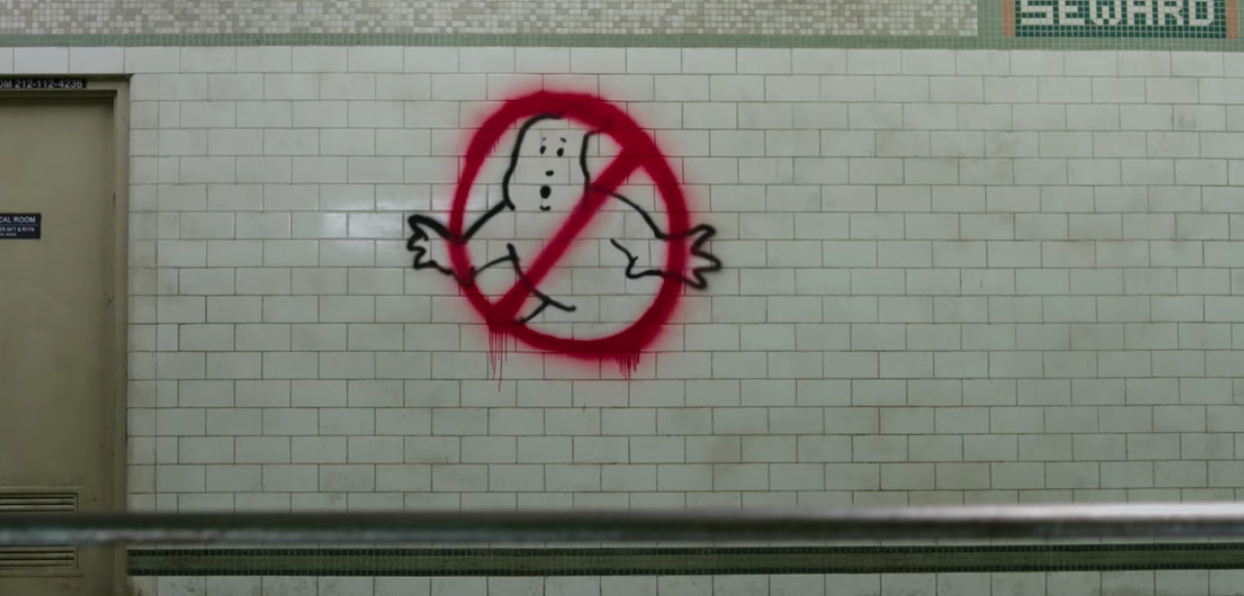
3. Two of the malevolent ghosts from the movie's conclusion — the Stay Puft Marshmallow Man and, the final Big Bad, the Ghostbusters-logo-turned-evil — are figures are from the original movie, but don’t read too much into that.
Feig and Dippold at first wanted to use generic cartoon ghost imagery to be the final manifestation of the villain. "A cute-looking ghost,” a white sheet, or clip art, “and seeing how terrifying we could make that look," Dippold said.
The film's designers tried different images, but the results turned out to resemble the logo in action. In the end, Dippold was fine with the confectionery callback: "It always felt like there was no way to trump Stay Puft by coming up with something new."
Dippold and Feig insist that this new Ghostbusters isn’t positing that the enemy is the original movie, though. "We should just not say anything and go, 'Mmm hmm,'" he said, rubbing his chin.
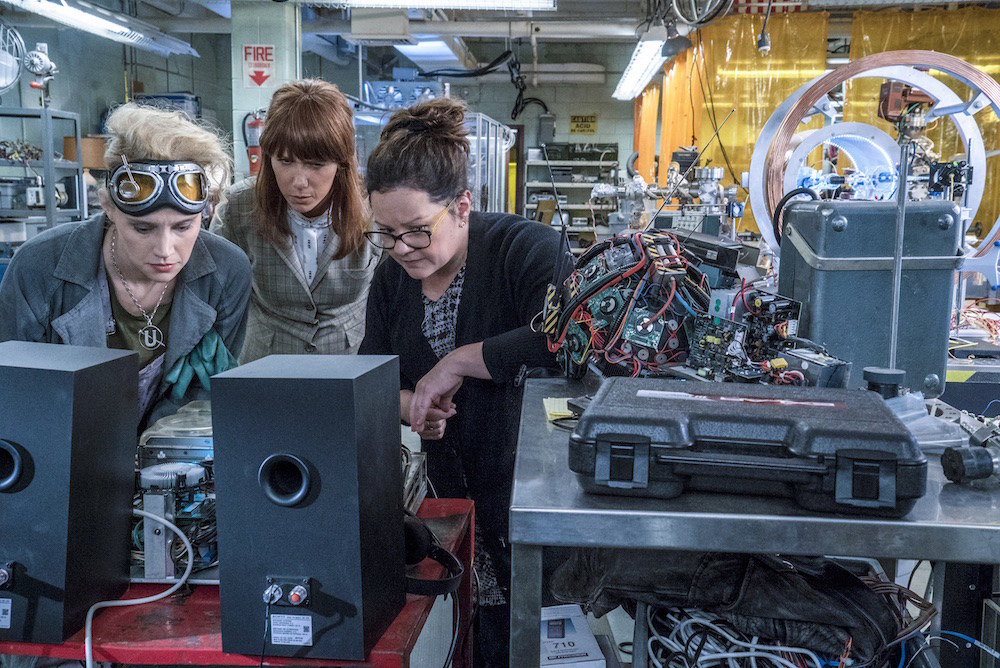
4. Ghostbusters’ swipes at sexist trolls were, however, deliberate.
There are two distinct moments when the movie mocks internet trolls — the same people who flooded YouTube with negative votes and vicious comments about Ghostbusters.
In one instance, Erin is upset that people are accusing the Ghostbusters of faking their video of an apparition. "This stuff is real. We have to be able to prove it!" she says. Abby responds: "We will. And you shouldn't be reading this stuff. You're not supposed to listen to what crazy people write in the middle of the night online!"
In the other jab, Abby attempts to show Erin that not everyone leaving comments on their videos is insane. Reading the wrong comment, Erin intones, "Ain't no bitches gonna hunt no ghosts."
That comment was scripted, but the writers’ revenge was real. As it was first conceived, the insult was "ruder," Feig said. He tried to remember the exact phrasing of the original joke: "I want to slap them with this dick?’" he said with some hesitation. (The final version of the joke was written on set.)
Another meta reference to the Ghostbusters backlash very nearly made it into the film: The rock concert action sequence at one point was written to actually take place at a comic con. The main idea behind that, Feig said, wasn't to give the finger to angry geeks, but rather to situate a ghost where it might be mistaken for a prop or cosplay.
However, the filmmakers couldn’t nail down the right location, which gave Feig a chance to consider: "Is it going to look a little too much like we're taking revenge on nerd culture?" he said. "I've been in geek culture since I was a teenager, and I love those people. I didn't want the mean negativity of a few to tarnish the community that I love."
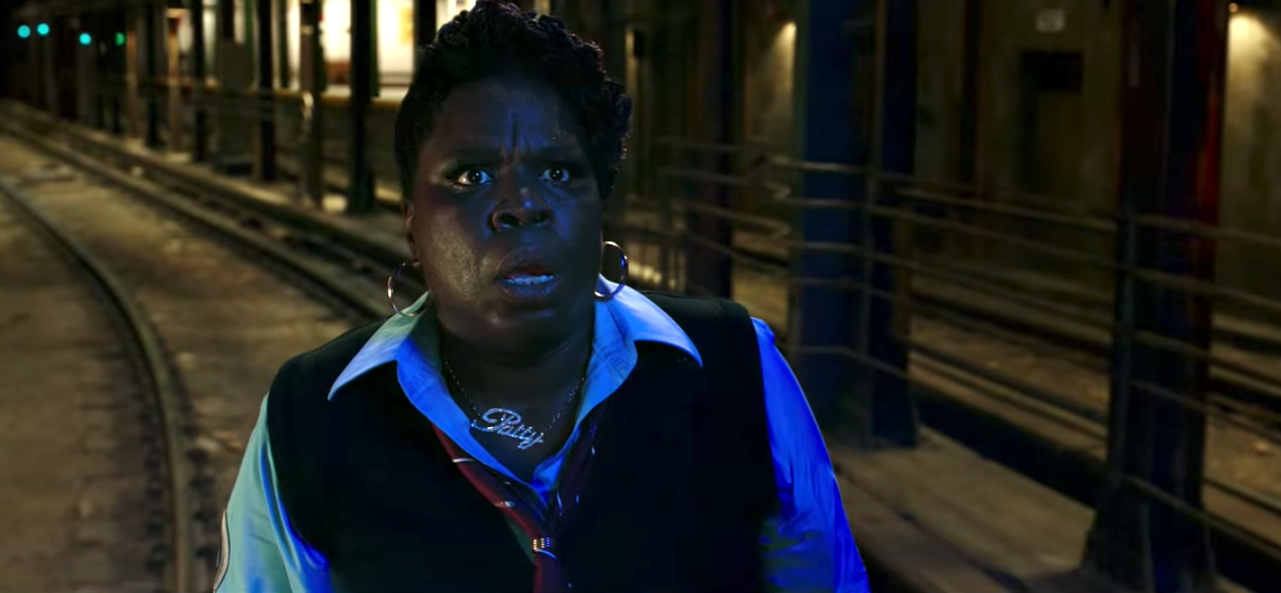
5. Waves of of misogyny swept over Ghostbusters. But so did criticism that Leslie Jones' character Patty was a racist caricature.
The movie's three white main characters — Erin, Abby, and Holtzmann — play physicists (which in itself is a disruptive idea, considering the gender gap in the sciences in the real world). Patty is an MTA worker who’s inspired to become a Ghostbuster after she witnesses the movie’s villain summoning a ghost on the subway tracks.
When the first Ghostbusters trailer was released in March and Patty's role appeared to be not only less educated but more cartoonish, the movie seemed like it might be a failure of intersectional feminism. It was also an echo of the 1984 original, when Ernie Hudson — the sole black Ghostbuster — also was the only non-scientist. Had things really changed so little in more than 30 years?
"I can’t speak for all black women," wrote Kendra James in The Toast after the trailer came out, "but given how few opportunities we get to appear in genre media overall, I’m not yet ready for this character to be yet another stereotype."
Both Dippold and Feig took the criticism to heart, and they hope that the entirety of the film dismantles the reading that Patty is flat, if not a racist portrayal. (In her review, BuzzFeed News' Willmore wrote that Jones "does a lot to fill out a character who could have benefited from a little more distance from the tired trope of the street-smart black person.")
The role of Patty was originally written for McCarthy — “the strong outsider who comes in and says, 'This stuff's weird, and what are you doing?'" as Feig said. "But then I felt like that was sort of the role that she had in The Heat."
"I'm just comedy-blind, and I'm like, where can their skills go through the roof so they can be the most impressive and the funniest?" he continued. "I feel terrible that I didn't even think about the scientist thing."
He said the experience was "kind of gutting," but he still feels that Jones is "greatest in that role — she's so good in the movie." He exhaled audibly. "But there's nothing like getting called a racist," he said with a grimace.
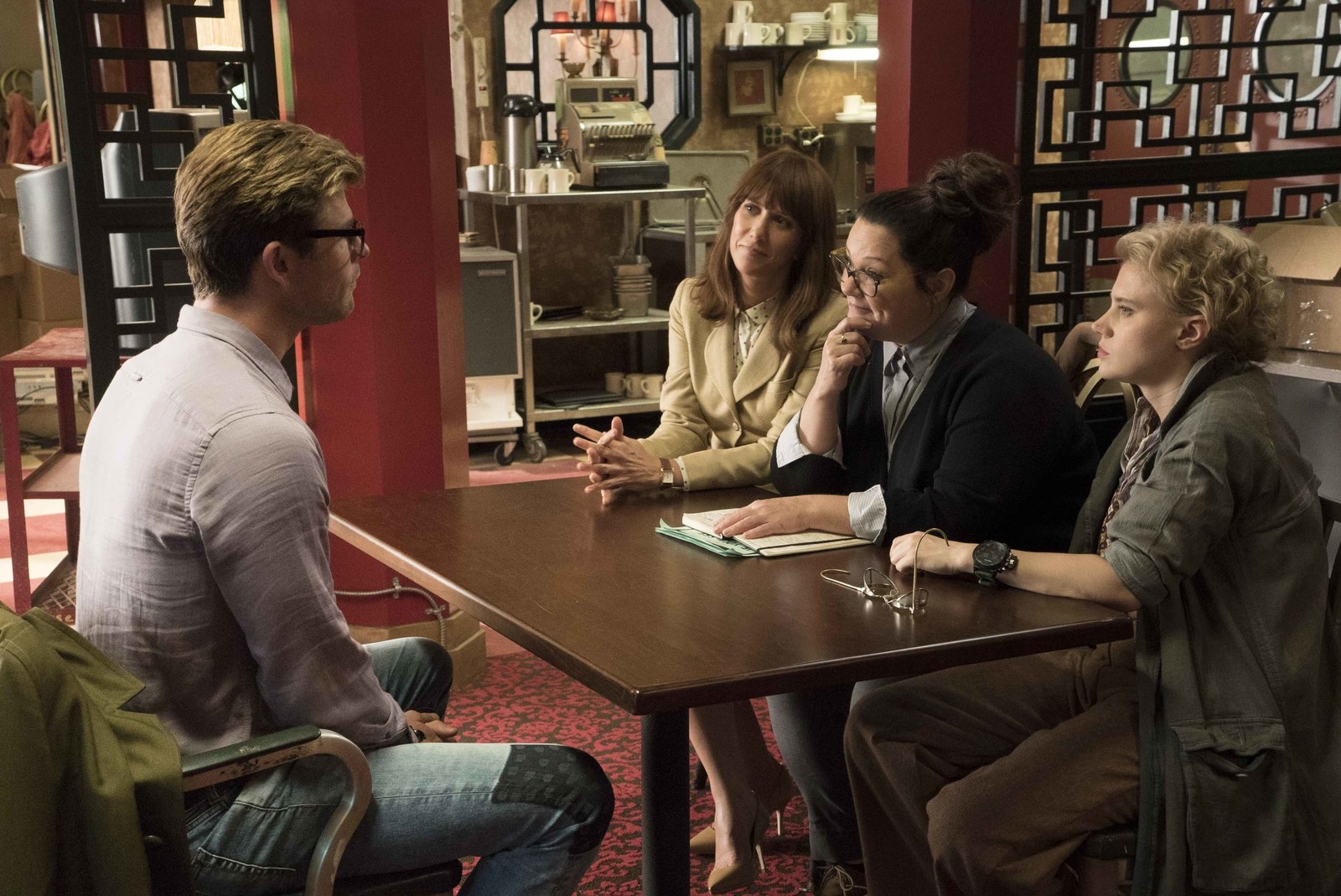
6. Jones' and most of the cast's backgrounds are in improvisational comedy, which is also Feig's practice — but he shoots scenes as written first.
"He always wants everyone to feel safe to improvise," said Dippold. And sometimes the improvisation is with Feig himself, with an actor volleying back and forth with him.
"And Katie is listening, and she's got her Post-its pad, and she's handing in jokes," Feig added. "'Improv' is a slippery word — it sounds like we're just going off book. Improv is sometimes taking this dialogue that's been written and just changing words in it, or changing the flow or inverting something."
Chris Hemsworth, who plays the dim office assistant Kevin, claimed that he didn't know how to improvise when he showed up to set. And yet Kevin's screamingly funny job interview scene — during which he asks to bring his cat to work and then says it's a dog named "Mike Hat" ("His full name is Michael") — was wholly made up by Hemsworth.
"He's like a pool hustler," said Feig. "He came to me the day before, and he was like, 'I don't do improv, and these girls are so funny, and I'm really nervous.' I was like, 'No, no, Chris, Katie and I are going to write you a bunch of jokes, you're going to be fine.' And then he turns out to be an improv master."
That Hemsworth's Kevin, a delightful moron spoofing what is generally a woman's role, has become a flashpoint that has infuriated certain fanboys should come as no surprise.
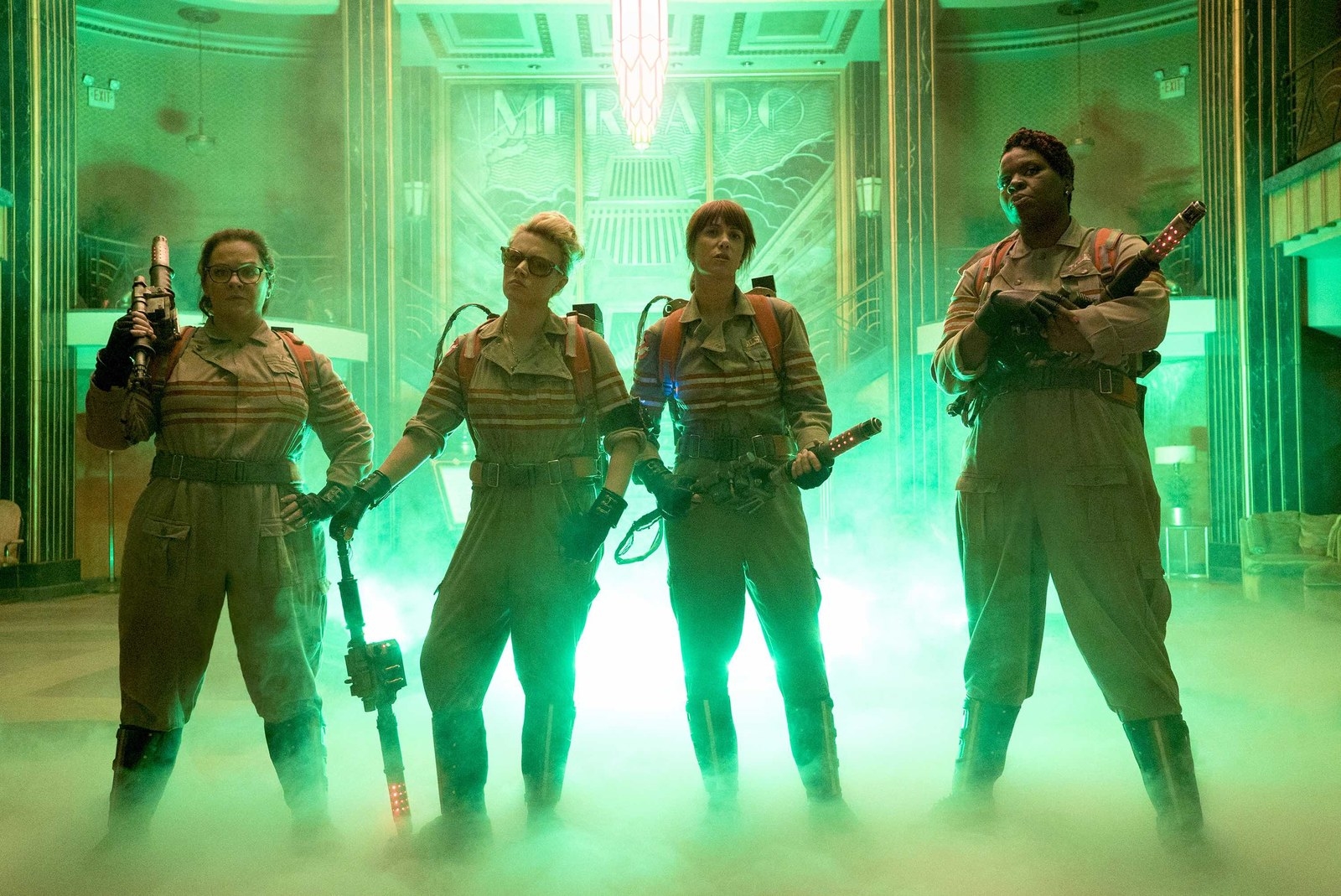
7. Feig is a feminist and has directed several films that could arguably be remembered as feminist classics.
Feig’s role as a male director who can successfully churn out female-led mainstream hits is a unique one in the entertainment industry. It's also an inherently political position, though Feig said "the only politics of it is a frustration that came from several years back seeing all the funniest women I knew showing up in movies and not being funny, seeing the guys getting to be hilarious, and the women are just foils to them."
He added, "Comedy in particular has become such a boys' club over the past 25 to 30 years."
"This is why Paul is one of my favorite feminists," Dippold said. "It's not like he's looking at these women and saying, 'I'm going to help you.' He truly, genuinely is like, 'No, I think these people are the funniest, and I want to work with them.'"
For that, Feig became a target, with many threats aimed at him and Dippold. (One person wanted them to "die under a bus" and to "taste our own blood," he said, laughing ruefully.) "I mean, I try to put it in perspective. There was a vocal group of people who were very anti-women about this. But I don't know how big that group was. People say that I say that everybody who's against this movie is a misogynist — I've never said that, ever, ever, ever.
“There are people who have legitimate concerns that there are too many reboots and remakes being done. I understand that. And now some of them are hiding behind other things—" He stopped himself. "This is going to sound again like I'm saying that everyone is a misogynist!"
Ghostbusters' journey has been a difficult and ugly slog, full of pitfalls symbolic of our troublesome current moment. But maybe now it can also just be a movie. "I just hope people judge the movie on its own merits," Feig said. "The last thing any of us wanted to do was make a political statement."
